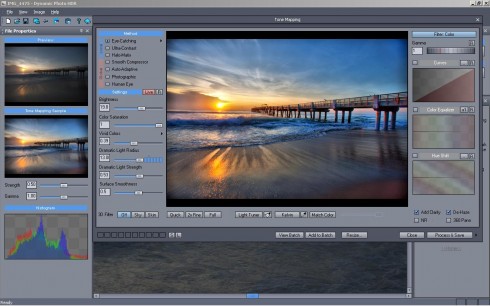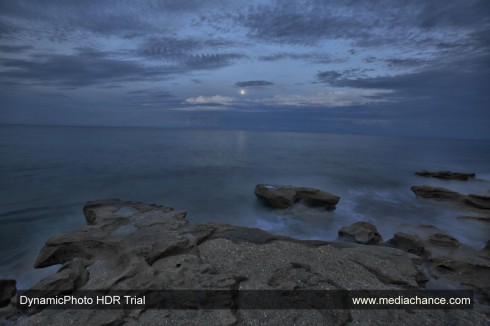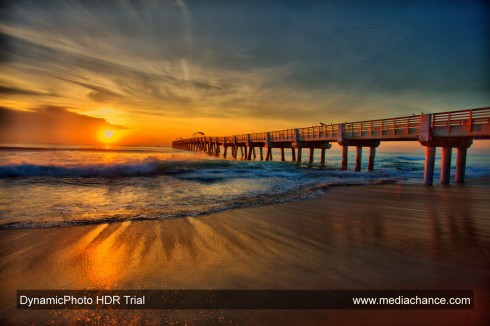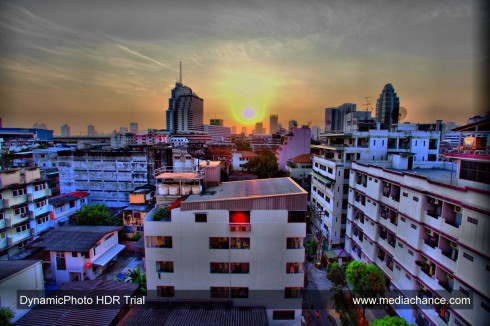 Posted February 26, 2011 – DynamicPhoto HDR is the second on the list of HDR software to be tested and reviewed. The good thing about DynamicPhoto HDR is that the user interface is laid out very nicely. For someone new to HDR, I feel that it’s important to clarify these steps and this program did a very good job of that.
Posted February 26, 2011 – DynamicPhoto HDR is the second on the list of HDR software to be tested and reviewed. The good thing about DynamicPhoto HDR is that the user interface is laid out very nicely. For someone new to HDR, I feel that it’s important to clarify these steps and this program did a very good job of that.
Operating System – Windows, MAC Virtualization
Price – 55.00 USD
Standalone/Plugin/Both – Standalone
Processing RAW files – Yes
HDR from Single RAW – Yes
Overall Speed – Average
Visit Official Website – http://www.mediachance.com
Go to DynamicPhoto HDR Download Page
DynamicPhoto HDR has got a very simple and easy to use interface. I can’t imagine someone new to HDR photography finding this HDR software difficult to use.
Off the bat, I find strange that the Step1 and Step 2 window menu starts up with these options on the right side of the window. I feel it would be more intuitive to have this window on the left side. But who am I to say, I’ve only been using imaging programs for over a decade. However, I don’t have any beef with it since DynamicPhoto HDR’s interface is customizable, similar to Photoshop’s UI, so one can simply rearrange the menus to fit their needs.
As I mentioned before, the one thing that I was looking for in an HDR program was the ability for me to create my HDR image as fast as possible. Dynamic Photo HDR doesn’t seem to offer this option as I have to go through multiple steps to get to the tone mapping window. I’m surprise that Dynamic HDR doesn’t give me that option since they allow me to customize the interface.
To start using Dynamic Photo HDR is easy, click the “Step 1 – Create HDR file” button. A window will then pop up allowing me to load an exposure and set my tone mapping options. It also has an check box that will align the image in the next window. The Create HDR file window also allows me to adjust my exposure value for each image, which I thought was pretty cool, and might actually come in handy for certain HDR images.
Once I click the OK button, Dynamic HDR takes me to the next window, which is the alignment window. A whole window dedicated to alignment, great for those who want to manually align each image, but for me I prefer the program to auto align my images and take me straight to the tone mapping window. This window also allows you to remove ghosting, but it seems Dynamic HDR already does a decent job automatically. Unfortunately DynamicPhoto HDR does not have a big button that says “auto align”. After a few minutes of figuring out the alignment window, I manage to get the image aligned… I think.
After setting my alignment I need to click another OK button to proceed. This takes me to the main window where I actually have to click Tone Map HDR file to begin tone mapping my HDR image. Again I have to click another button to finally get to the tone mapping window where I can begin creating my HDR image.
Now that I’m in the tone mapping window for Dynamic Photo HDR there are some cool options for producing some interesting images. Dynamic HDR allows for six different tone mapping methods, each from dynamic to realistic. It also has a total of six options for adjusting the tone mapping settings. But what I like most of this program is all the other options available to help produce very creative HDR photos. For instance Match Color and Color Equalizer… worth the time in experimenting with.
Something annoying about Dynamic Photo HDR is that when you click the process and save button, the tone mapping window is still active. I find this a bit of a nuisance since I’m going to be wondering whether or not I actually saved the file. I think the reasoning for this is to allow for multiple tone mapping of the same image. It’s rare that I would ever tone map a photo more than once.
Unless for some reason the final image wasn’t what I previewed, which was the case for the underground parking garage photo. I had to tone map that image twice because the final image came out much darker than expected. So I would caution those using the preview window to ensure it matches the final saved image.
Overall I would recommend this program as an excellent starting point for new HDR photographers as well as advance users looking to produce creative HDR images. Considering the price, only 55usd, you get a top notch application with some attractive features. I only hope, in the future, that Dynamic Photo HDR streamlines their tone mapping process so that I can get in and out of the program without a lot of button clicking.




